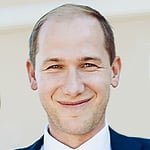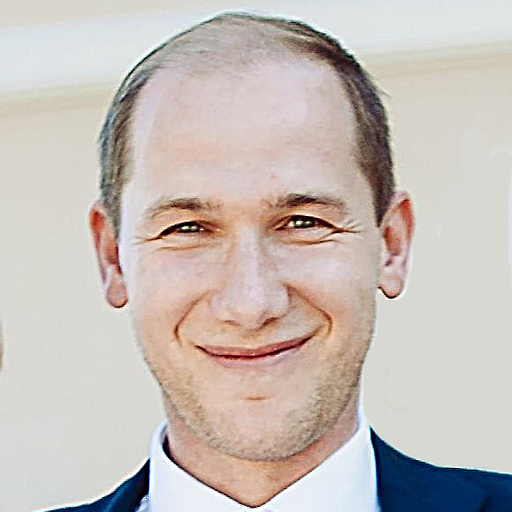Table of contents
At work, do you need to be a stronger weightlifter to outdo more senior guys? Not necessarily. The difference lies in learning.
You will come to a point where knowledge gathering from more senior peers becomes less enriching. While reading, you might stumble upon an article describing an obscure tool or innovative technology which could solve your product’s issue. In two days, you’ll come up with an integration of the new cloud service mentioned in ThoughWorks radar as a working prototype. Meanwhile, the more experienced developers suggest implementing a solution from scratch, estimating two months.
After some time, people come for advice, a senior manager asks for your opinion. Fast-forward, you end up in a software architect role.
Turn your learning into a routine
1. Gather your knowledge sources first
In the beginning, the challenging thing is to get organized. First, write down your small knowledge source catalog of various personal and company blogs, articles, podcasts and newsletters.
Start making the list on your own, then ask others about the top feeds they find valuable. I don't suggest googling it, as, in the current era, there is actually too much noise and too many low quality sources. Keep your list small, up to eight sources maximum. If you identify any source as irrelevant, out of scope, or simply not insightful enough, drop it. Quality is key. Make no compromise.
Throughout the journey, some of the articles will refer to other useful blogs, thus expanding your own knowledge source.
2. Allocate your time
I recommend creating a daily learning block in your private and company calendar each morning. Mine is called Read&Post. In the beginning, 30 minutes is more than enough. The more senior you get, the more of your time you can invest in learning.
In case anyone puts a conflicting meeting in your schedule, kindly ask them to reschedule unless it’s critical.
Most importantly, be persistent. Preserve your intrinsic motivation. Initiate your daily routine and improve it over time. You will get used to it in a couple of weeks and others will start recognizing your extra value in a few months.
It is natural to end up skipping 2–3 of your daily learning sessions each month. Get ready to spend more time than expected on it during the first week.
3. The daily routine steps
My learning time consists of the following:
- First, I go through the knowledge source list, while opening what seem to be the most -valuable posts in separate browser tabs.
- Then, I pick the top 1–2 articles, depending on my mood, my gut feeling, or the writer (you’ll start to recognize them over time). The top trick I recommend is to avoid the trap of todo lists treated as a pool of other potentially valuable articles worth reading in the future. You'll never read them. Moreover, it creates an improper and negative connotation of duty in your mind, making your learning path less appealing. The only exception here is to use a ‘read later offline’ app, such asPocket or Raindrop, to tag articles you can come back to in the same day, like while you’re commuting.
- Finally, I share the valuable pieces I’ve found across the company to dedicated channels (Slack, for example). Over time, more people will contribute too and you’ll end up learning from others.
Advanced tips
Grow your knowledge library
I end my daily learning routine by saving my most treasured articles and sources in a separate folder or document. Reason being, it is amazing to build and have the list of wisdom and answers you trust at hand. All of a sudden, you can provide solutions in a shorter time frame, as opposed to relying on “Google help”. The invaluable side effect is, by manipulating the top quotes and links, the ideas will better persist in your mind.
There are many tools out there to help with tagging various sources. In practice, I took the most simplistic approach: having a basic folder structure categorized by the domain of interest, i.e., for technical, managerial, or leadership content.
Each file in the category folder represents a different topic of interest.
For handling files, I prefer using markdown syntax as it helps keep the file content of links and quotes clear and understandable. The knowledge library folder is then synchronized with cloud storage (i.e.,Google Drive free tier) to make sure nothing gets wiped out accidentally. Eventually, create a free Github repository similar to this. In terms of files management, I'm a big fan of Atom editor due to its simplicity and great search features. No complex tooling.
I advise you to let your knowledge library grow as soon as you get comfortable with the previous steps of the daily routine, not before.
Find your feed management app
After you get used to spending your morning time learning, I advise trying out a feed management application. Most of them have a free tier, which already covers most of the features.
My top picks are inoreader or feedly.
The reason the app is worth your investment, is that it unifies your different sources of blogs, podcasts, and newsletters in one single spot, while distinguishing the read vs. unread posts, thus saving your time spent with browser tab orchestration.
Manager’s conclusion
In the world of software development, a manager should understand that knowledge sharing and learning are the highest background priority. Such company skill adoption is a long-term initiative, as opposed to one company OKR cycle.
When we embrace the culture of intrinsic learning and knowledge sharing, we gain a competitive advantage in feature delivery, pace, and hiring. Talent attracts talent.
Set the groundwork for domain-specific knowledge-sharing channels. Contribute to it yourself.
Create regular knowledge sharing sessions with an assigned owner (architect, guru, or staff-level). Make the learning and sharing responsibility explicit in your career growth scheme.
Rather than ‘generously’ providing paid sources, help your people in learning habit adoption and in the sources gathering step.
Create an environment where people are incentivized to post blogs. Make it explicit by allocating the time in the form of a ticket, handled by community people. Reward it. Market it.
Summary
The road ahead is an adventure, and you’ve got the steering wheel.
Do not let your programming adventure die by staying in the workforce area for too long.
To give you an advantage and keep one step ahead, consider to reusing anything of relevant in your programming and managerial feed lists. Now, it’s your turn. Set the calendar morning slot.

Author
Marian Kamenistak
Marian is our VP of Product Engineering. What does that mean? Well, he's increased our delivery time for products, improved our engineering department, and even created an internal Leadership Growth Program.

Essential hotel technology for general managers
Download now
Hospitality hot takes straight to your inbox


.webp)